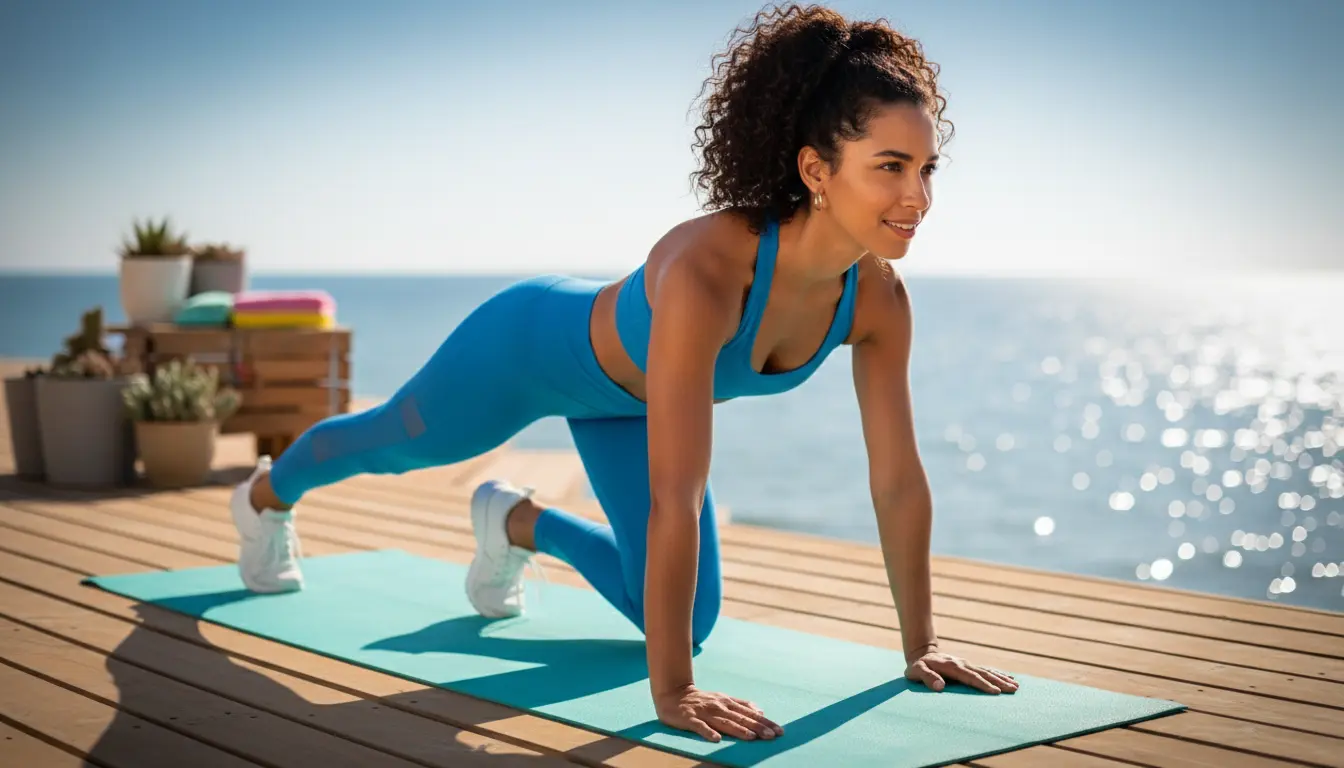Ready for a workout that turns your body into a Swiss Army knife of fitness—agile, resilient, and surprisingly toned? Forget the gym membership, say goodbye to monotony, and meet Nordic walking: an outdoor activity so effective, it gets more than 90% of your muscles in on the action. Intrigued? Give those arms, legs, and even your core a purpose beyond scrolling and Netflix bingeing—let’s dive into the universe of Nordic walking!
Why Walk When You Can Nordic Walk?
- Looking for an all-body exercise that’s both accessible and genuinely beneficial for your health? Nordic walking fits the bill perfectly.
- This practice nearly recruits every muscle group: arms, legs, and torso— all activated by a smooth, rhythmic movement.
- By using specific poles as you walk, you don’t just engage your arms but your entire upper body. As you push the poles, your back, arms, shoulders, and core work intensely—activating up to 40% of your upper body muscles, making it vastly more effective than ordinary walking.
Nordic walking, hailing from Finland (where it’s known as « Sauvakävely »), emerged in the 1930s from cross-country skiers wanting to keep fit in summer. Pioneers Leena Jääskeläinen and Mauri Repo helped popularize it, with Jääskeläinen even introducing it in university courses as early as 1966. Over time, Nordic walking has spread around the globe, adored for being a complete activity accessible to all ages, with the bonus of being social and group-friendly. There’s no need for expensive equipment or an age limit, and you can practice it almost anywhere and anytime without dangerous side effects. Who can beat that?
The Mind-Body Wonder of Walking
This isn’t just about moving from point A to B. Walking—particularly when it extends beyond a rushed commute—becomes a powerful tool for relaxation, reflection, and even meditation. Step into a pace all your own, alone or with others: leisure walks, sporty hikes, or nature rambles all have one thing in common—they soothe both body and mind. Jean-Jacques Rousseau once claimed, « I can only meditate when I am walking. » Throughout history, the likes of Socrates, Kant, and many beyond have extolled the intellectual powers unlocked through walking. Pilgrimages in countless traditions, too, celebrate its spiritual side.
The 20th century rediscovered what Hippocrates already knew: “Walking is the best remedy for man.” Maybe it felt a touch overzealous back then, but the benefits still ring true. Walking, particularly Nordic walking, isn’t just gentle physical activity—it actively fights the dangers of sedentary living while improving your fitness. Engage your abdominal muscles and you’ll even keep constipation at bay. As you unwind and stretch your muscles, blood flow improves (the plantar arch and calves push blood upward), muscle contractions strengthen bones and joints, and better cardio-respiratory performance boosts oxygen to the brain. Studies have shown that walking helps prevent a host of ailments: osteoarthritis, high blood pressure, osteoporosis, diabetes, heart attack, stroke, breast and colon cancer, and even depression. Not bad for something you learned as a toddler.
Technique: Make Every Step Count
- With just thirty minutes a day, you can lower your blood pressure by a point and slash your heart attack risk by nearly 20%.
- Women who walk at least four hours a week reduce their risk of hip fracture by 40% compared to those who walk less than an hour, according to Inserm research.
- Regular walking polishes your reflexes, strengthens stabilizing muscles in hips and legs (think quadriceps, flexors, and extensors), and boosts balance, muscle strength, endurance, and confidence.
All it takes is a few minutes a day—no matter if it’s a quick stroll to the bakery or a whole week dedicated to roaming. The real difference comes from your chosen pace and duration. A tip for better movement: ditch the habit of “heel striking,” which sends shock waves up your legs and spine. Instead, land your foot flat on the front third, let the heel barely graze the ground, and propel yourself off your big toe. This way, your plantar arch, metatarsals, ankles, knees, and hips all absorb the impact. Soon, your rhythm will feel natural, and you’ll be clocking more time walking without even noticing.
Nordic Walking: Fitness for Every Body
Nordic walking blends elements of walking, cross-country skiing, and running. Keep your back straight, place your weight on two fiberglass and carbon poles, and push ahead using your big toes—arms and legs alternating in opposition. The result? All four limbs work, recruiting more than 90% of your muscle groups. Muscles that rarely get attention—calves, biceps, triceps, pectorals, and latissimus dorsi—spring into action, and even your glutes work harder than during regular walking.
It’s fantastic for building endurance, boosting balance, and improving coordination, all while sparing your joints. If you’re overweight, or just want a gentler workout, rejoice: body weight is distributed across both arms and legs. Lung capacity and oxygenation leap up to 60% higher than with regular walking, significantly helping to prevent high blood pressure—a major cardiovascular risk factor.
In search of tranquility? Try meditative walking. Tune into the sights, sounds, colors, and breeze around you, feeling your muscles and breath. With practice, returning to the present is easier—a wonderful antidote to stress.
If you live near the coast, why not experiment with water walking? Chest-deep in water, you push against resistance, with or without a paddle, topping up upper and lower body effort. Fresh water boosts circulation and improves vein return—just be sure to bring a trained sport instructor as water can mean extra risks.
Conclusion: Whether you are a contemplative stroller, a power-walking enthusiast, or a socialite striding through the woods—Nordic walking makes every step matter. Affordable, powerful, and adaptable to any body, it’s time to grab those poles and rediscover what your muscles (and mind) can really do. After all, life’s better when you walk—and Nordic walk—your way through it!

John is a curious mind who loves to write about diverse topics. Passionate about sharing his thoughts and perspectives, he enjoys sparking conversations and encouraging discovery. For him, every subject is an invitation to discuss and learn.






